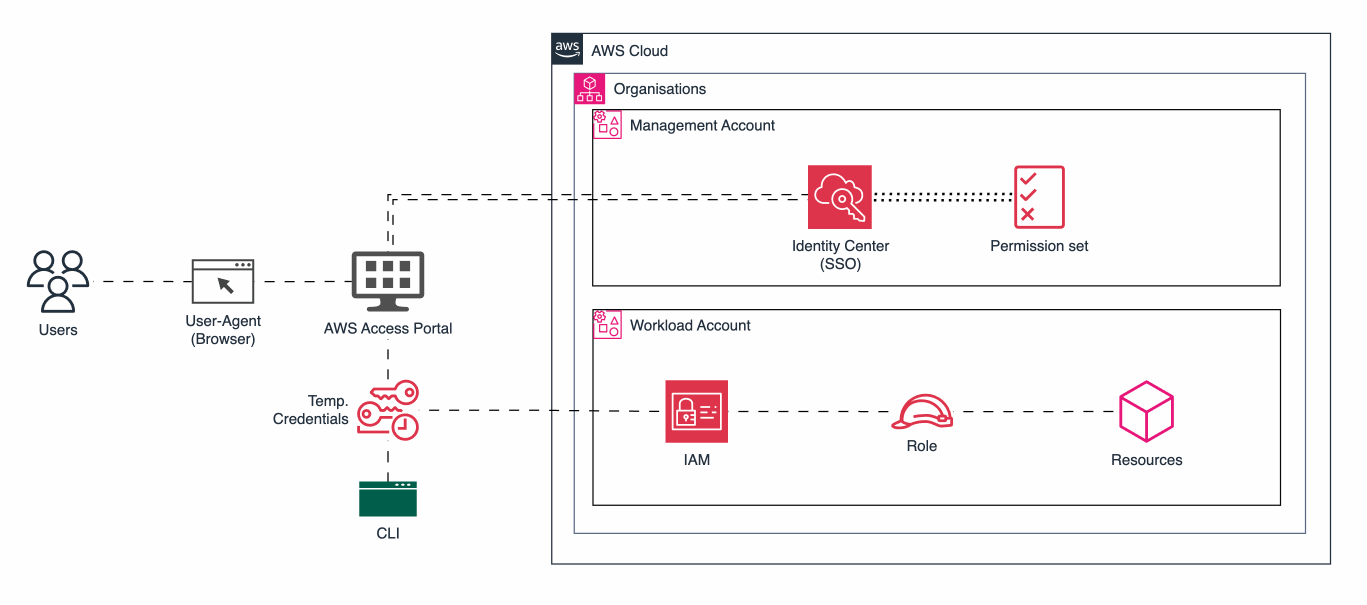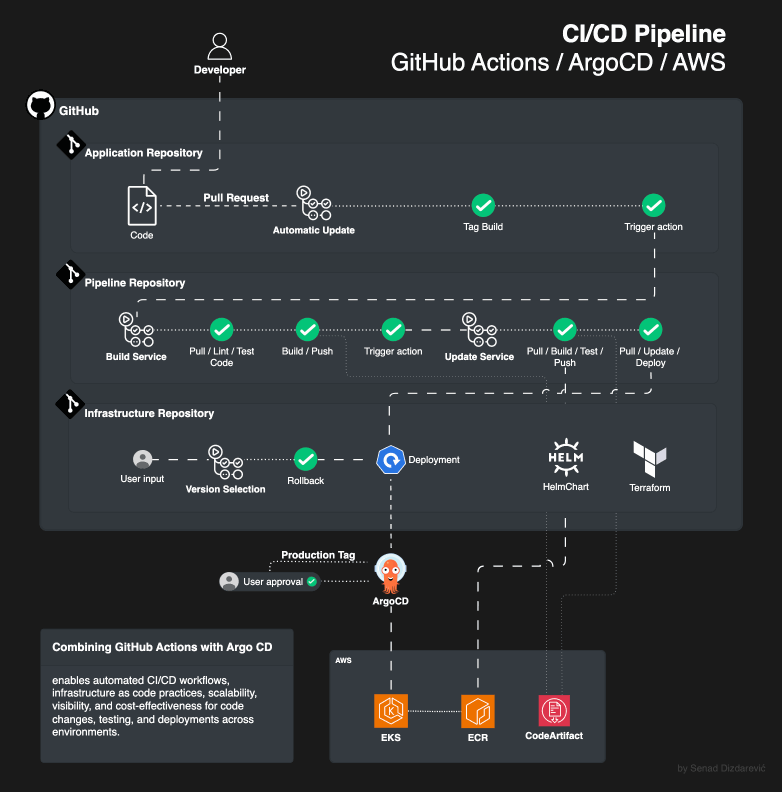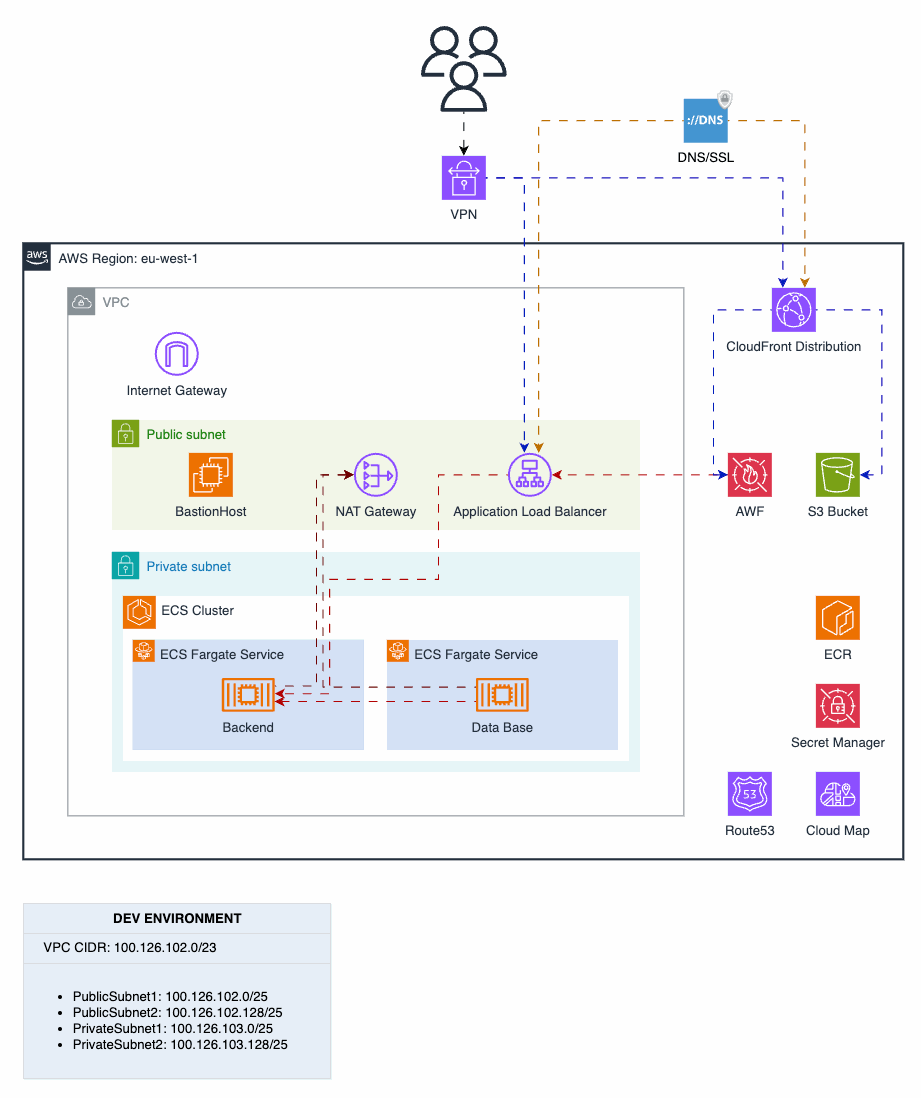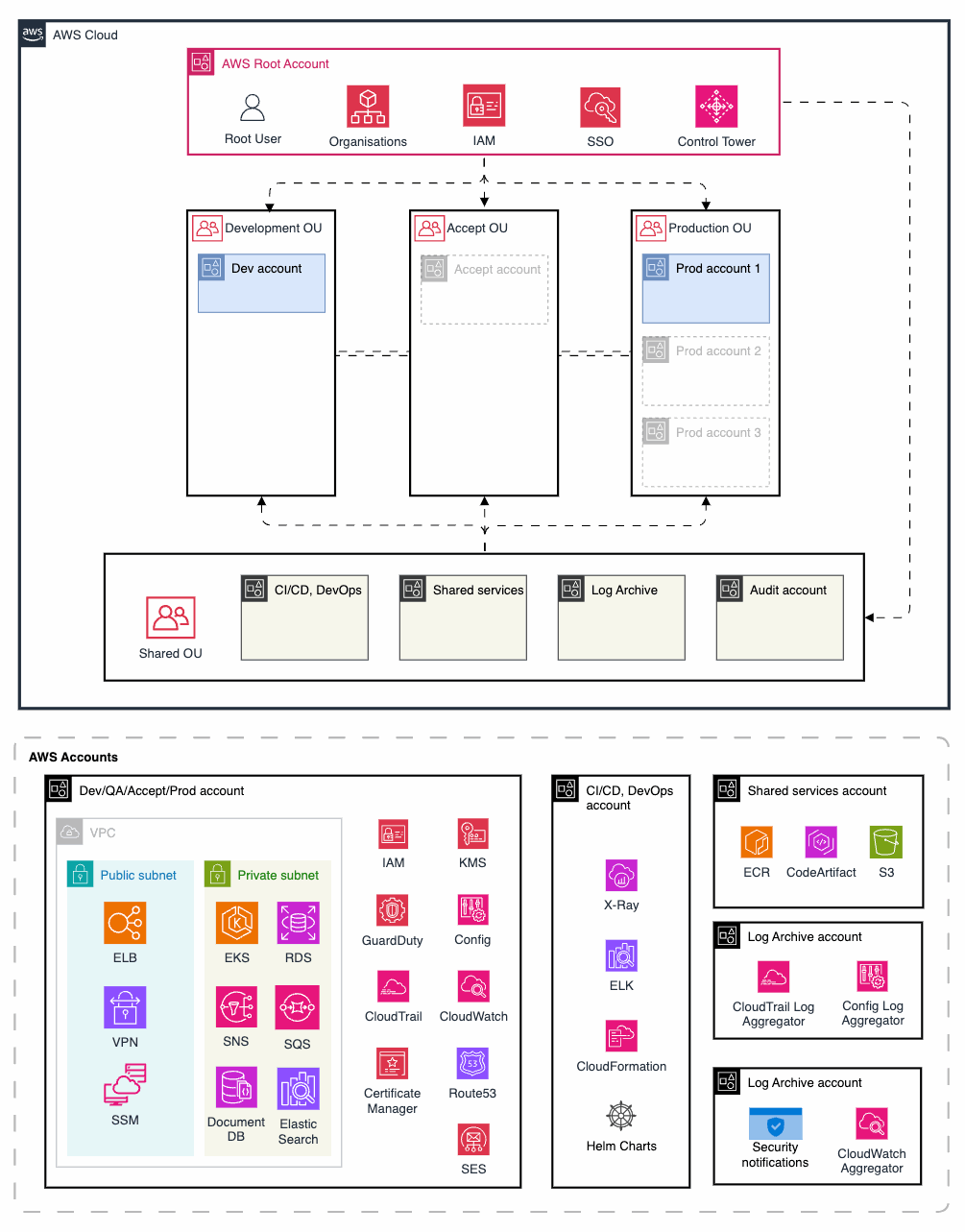Diagrams
Introducing AWS Identity Center – Revolutionizing Access Management for Organizations
Why choose AWS Identity Center over IAM?
1️⃣ Enhanced Control: Granular access permissions for precise management.
2️⃣ Centralized Management: Streamline identity management from one interface.
3️⃣ Streamlined Collaboration: Assign roles effortlessly for seamless teamwork.
4️⃣ Increased Visibility: Monitor access patterns and maintain compliance effortlessly.
Setting up AWS Identity Center:
- Integrate with existing identity providers.
- Define user groups and roles.
- Craft policies for least privilege.
- Enable detailed audit trails.
- Seamlessly integrate with AWS services.
Learn more here.
Elevate your organization’s security posture with AWS Identity Center!
Simplifying Deployment with GitHub and AWS
Efficient software development hinges on optimizing deployment workflows. By harnessing the power of GitHub, AWS EKS, and ArgoCD, we can achieve seamless deployment automation and management.
In this approach, distinct GitHub repositories are employed for the application, pipeline, and infrastructure components:
🔹 Application Repository: Any changes here automatically trigger the deployment pipeline.
🔹 Pipeline Repository: Updates in this repository are responsible for tweaking infrastructure configurations.
🔹 Infrastructure Repository: Contains Terraform code for managing infrastructure and Kubernetes manifests for configuring AWS EKS.
🔹 ArgoCD: It diligently monitors the infrastructure repository for alterations, promptly syncing them with the AWS EKS cluster.
This organizational structure fosters a smooth, hands-off deployment process, reducing manual intervention and boosting overall efficiency. Embrace the power of GitHub and ArgoCD to streamline your deployment workflows today!
Embrace the Power of AWS ECS Fargate!
In the dynamic realm of AWS, ECS Fargate emerges as an orchestration powerhouse, enabling seamless container deployment sans the hassle of managing infrastructure. It effortlessly scales in response to fluctuating workloads, ensuring optimal performance without manual intervention.
Imagine a scenario where your database resides within an ECS container, guaranteeing a standardized and secure environment. This encapsulation not only streamlines deployments but also ensures robust isolation, bolstering your application’s resilience.
On the frontend, capitalize on the scalable storage capabilities of S3 for hosting static assets, seamlessly delivered worldwide through CloudFront for lightning-fast content distribution. With ECS facilitating blue-green deployments, updates and rollbacks become a breeze, empowering you to iterate efficiently through versioned container images.
For monitoring and troubleshooting, lean on CloudWatch to capture detailed logs and insights, serving as the grand observatory for your application’s performance. And let’s not forget about Fargate’s cost-effectiveness, rooted in its serverless model, where you pay only for the computational resources consumed by your containers.
Unlock the potential of AWS ECS Fargate and orchestrate your deployment with precision, efficiency, and cost-effectiveness!
Unlock the Power of AWS Organizations!
🔍 Dive into this enlightening post shedding light on AWS Organizations and its transformative impact on cloud management within your organization.
🌟 Organizational Structure: AWS Organizations enables you to centrally manage and govern multiple AWS accounts, streamlining administrative tasks and enhancing security across your entire organization.
🚀 Consolidated Billing: With AWS Organizations, you can consolidate billing across all linked accounts, simplifying financial management and gaining insights into your organization’s AWS spending patterns.
🔑 Policy Management: Seamlessly enforce policies and compliance standards across your AWS accounts with AWS Organizations, ensuring consistency and mitigating risks effectively.
💡 Resource Sharing: Facilitate resource sharing across accounts effortlessly, enabling collaboration and maximizing resource utilization within your organization.
🔒 Security & Compliance: Bolster security and compliance posture with centralized management of IAM policies, ensuring secure access control and adherence to regulatory requirements.
🎯 Cost Optimization: Leverage AWS Organizations to implement cost allocation tags and optimize resource usage, empowering you to make data-driven decisions and drive cost efficiency within your organization.
🌐 Global Reach: With support for global deployment, AWS Organizations scales with your organization’s growth, providing a robust foundation for expanding your cloud footprint across regions.
🚀 Embrace the transformative capabilities of AWS Organizations and revolutionize your organization’s cloud management practices today!
Dive into Kubernetes Deployment Architecture!
🔍 Take a peek at this informative diagram illustrating the deployment of an application within a Kubernetes cluster, showcasing the intricate interactions between its various components.
🌟 Pods: These serve as the fundamental units within Kubernetes, hosting containers that share storage and network resources, forming the building blocks of your application.
🔄 ReplicaSets (rs): Ensuring high availability, ReplicaSets guarantee a specified number of identical Pods are continuously running, maintaining resilience within your cluster.
🚀 Deployments (deploy): Acting as the control layer, Deployments offer declarative scaling of replicas, alongside advanced features like rollback and various update strategies, streamlining your deployment processes.
🔑 ConfigMaps (cm) & Secrets (secret): Handling configuration data and sensitive information like passwords respectively, ConfigMaps and Secrets play pivotal roles in managing application configurations securely.
💾 Persistent Volumes (pv) & Persistent Volume Claims (pvc): Abstracting underlying storage, Persistent Volumes ensure data persists across container restarts, while Persistent Volume Claims enable Pods to request provisioned volumes as needed.
🎯 Services (svc): Providing abstractions for accessing Pods via selectors and load balancing incoming traffic, Services eliminate the necessity of individual Pod IPs, enhancing scalability and reliability.
🌐 Ingress (ing) Controllers: Facilitating path rewriting and load balancing, Ingress controllers such as NGINX or Traefik play crucial roles in managing external access to your services, enhancing routing flexibility.
🔒 Service Accounts (sa): Offering identities for processes running within Pods, Service Accounts ensure secure access control within your Kubernetes environment.
Explore the intricacies of Kubernetes deployment architecture and unlock the full potential of your applications with these powerful components!




